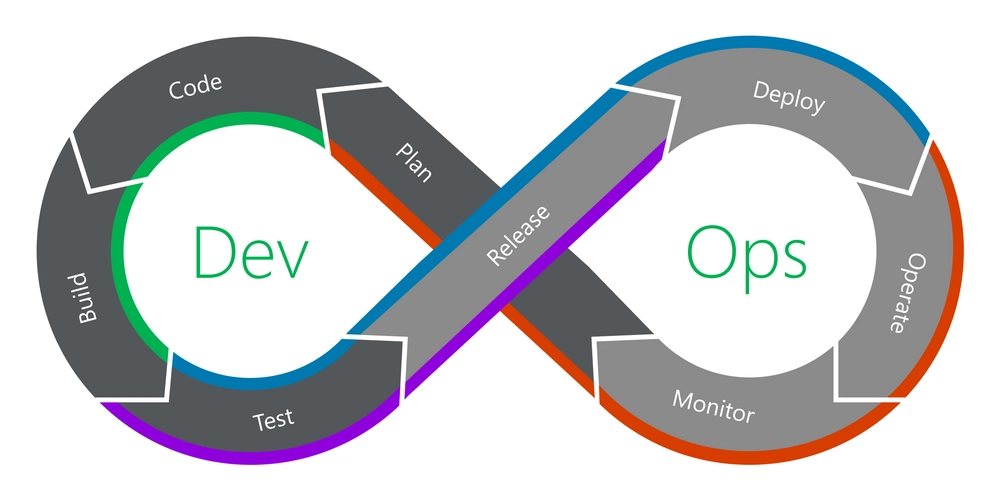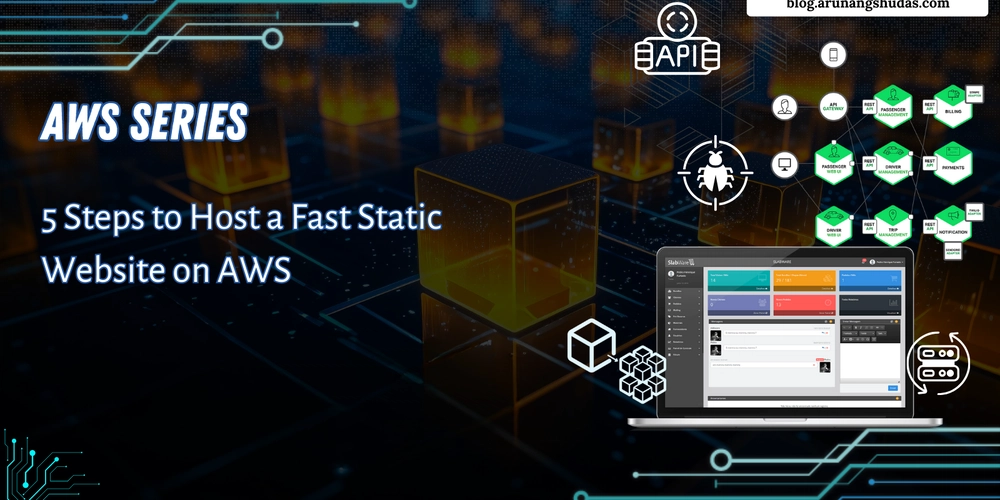What is DevOps? A Beginner’s Guide to DevOps Culture & Practices
Introduction In today's fast-paced software development world, speed, reliability, and collaboration are crucial. This is where DevOps comes in. DevOps is more than just a set of tools; it's a culture, methodology, and a set of best practices that bring development (Dev) and operations (Ops) teams together to accelerate software delivery. If you’re new to DevOps and wondering how it works, this guide will introduce you to DevOps principles, key practices, and why it's a game changer in modern software development. What is DevOps? DevOps is a combination of development and IT operations aimed at shortening the software development lifecycle while ensuring high quality and reliability. It promotes continuous integration, continuous delivery (CI/CD), automation, and collaboration between teams to achieve faster and more efficient software releases. In simpler terms, DevOps removes the traditional silos between developers and system administrators, allowing organizations to deliver software faster, with fewer errors, and with better collaboration. Why is DevOps Important? Before DevOps, software development and IT operations worked separately, leading to delays, miscommunication, and frequent system failures. With DevOps, organizations achieve: ✅ Faster software delivery – Automated processes reduce deployment times. ✅ Improved collaboration – Developers, testers, and system admins work as one unit. ✅ Higher reliability – Continuous monitoring ensures early detection of issues. ✅ Better scalability – Cloud-native DevOps enables on-demand infrastructure scaling. ✅ Cost efficiency – Automation reduces manual work and human errors. Key Principles of DevOps DevOps is built on several core principles that enable organizations to streamline their development process: 1️⃣ Collaboration & Communication – Breaking down silos between teams to improve efficiency. 2️⃣ Automation – Reducing manual work by automating repetitive tasks such as testing, deployment, and infrastructure management. 3️⃣ Continuous Integration & Continuous Deployment (CI/CD) – Automating code integration and deployment to release software faster. 4️⃣ Infrastructure as Code (IaC) – Managing infrastructure using code (e.g., Terraform, Ansible) for faster provisioning. 5️⃣ Monitoring & Feedback Loops – Using tools like Prometheus, Grafana, and ELK Stack for real-time monitoring and performance tracking. DevOps Lifecycle: The Key Stages The DevOps lifecycle consists of various stages that help streamline software development: 1. Plan Define requirements, create user stories, and plan features. Tools: JIRA, Trello, Asana 2. Develop Write and manage code collaboratively. Tools: Git, GitHub, GitLab, Bitbucket 3. Build Compile and package code into deployable artifacts. Tools: Maven, Gradle, Jenkins 4. Test Automate testing to ensure software quality. Tools: Selenium, JUnit, TestNG 5. Release Automate deployment pipeline and ensure smooth delivery. Tools: Jenkins, GitHub Actions, GitLab CI/CD 6. Deploy Deploy applications to production and ensure zero downtime. Tools: Docker, Kubernetes, Helm 7. Operate & Monitor Maintain system health and resolve issues proactively. Tools: Prometheus, Grafana, ELK Stack DevOps Best Practices To succeed in DevOps, organizations follow best practices that improve workflow efficiency:

Introduction
In today's fast-paced software development world, speed, reliability, and collaboration are crucial. This is where DevOps comes in. DevOps is more than just a set of tools; it's a culture, methodology, and a set of best practices that bring development (Dev) and operations (Ops) teams together to accelerate software delivery.
If you’re new to DevOps and wondering how it works, this guide will introduce you to DevOps principles, key practices, and why it's a game changer in modern software development.
What is DevOps?
DevOps is a combination of development and IT operations aimed at shortening the software development lifecycle while ensuring high quality and reliability. It promotes continuous integration, continuous delivery (CI/CD), automation, and collaboration between teams to achieve faster and more efficient software releases.
In simpler terms, DevOps removes the traditional silos between developers and system administrators, allowing organizations to deliver software faster, with fewer errors, and with better collaboration.
Why is DevOps Important?
Before DevOps, software development and IT operations worked separately, leading to delays, miscommunication, and frequent system failures. With DevOps, organizations achieve:
✅ Faster software delivery – Automated processes reduce deployment times.
✅ Improved collaboration – Developers, testers, and system admins work as one unit.
✅ Higher reliability – Continuous monitoring ensures early detection of issues.
✅ Better scalability – Cloud-native DevOps enables on-demand infrastructure scaling.
✅ Cost efficiency – Automation reduces manual work and human errors.
Key Principles of DevOps
DevOps is built on several core principles that enable organizations to streamline their development process:
1️⃣ Collaboration & Communication – Breaking down silos between teams to improve efficiency.
2️⃣ Automation – Reducing manual work by automating repetitive tasks such as testing, deployment, and infrastructure management.
3️⃣ Continuous Integration & Continuous Deployment (CI/CD) – Automating code integration and deployment to release software faster.
4️⃣ Infrastructure as Code (IaC) – Managing infrastructure using code (e.g., Terraform, Ansible) for faster provisioning.
5️⃣ Monitoring & Feedback Loops – Using tools like Prometheus, Grafana, and ELK Stack for real-time monitoring and performance tracking.
DevOps Lifecycle: The Key Stages
The DevOps lifecycle consists of various stages that help streamline software development:
1. Plan
- Define requirements, create user stories, and plan features.
- Tools: JIRA, Trello, Asana
2. Develop
- Write and manage code collaboratively.
- Tools: Git, GitHub, GitLab, Bitbucket
3. Build
- Compile and package code into deployable artifacts.
- Tools: Maven, Gradle, Jenkins
4. Test
- Automate testing to ensure software quality.
- Tools: Selenium, JUnit, TestNG
5. Release
- Automate deployment pipeline and ensure smooth delivery.
- Tools: Jenkins, GitHub Actions, GitLab CI/CD
6. Deploy
- Deploy applications to production and ensure zero downtime.
- Tools: Docker, Kubernetes, Helm
7. Operate & Monitor
- Maintain system health and resolve issues proactively.
- Tools: Prometheus, Grafana, ELK Stack
DevOps Best Practices
To succeed in DevOps, organizations follow best practices that improve workflow efficiency:









































































































































































![[The AI Show Episode 143]: ChatGPT Revenue Surge, New AGI Timelines, Amazon’s AI Agent, Claude for Education, Model Context Protocol & LLMs Pass the Turing Test](https://www.marketingaiinstitute.com/hubfs/ep%20143%20cover.png)


















































































































![[Tutorial] Chapter 9: Task Dashboard: Charts](https://media2.dev.to/dynamic/image/width=800%2Cheight=%2Cfit=scale-down%2Cgravity=auto%2Cformat=auto/https%3A%2F%2Fdev-to-uploads.s3.amazonaws.com%2Fuploads%2Farticles%2Fnotu3uxqtwmann665q6r.png)
![[Tutorial] Chapter 10: Task Dashboard (Part 2) - Filter & Conditions](https://media2.dev.to/dynamic/image/width=800%2Cheight=%2Cfit=scale-down%2Cgravity=auto%2Cformat=auto/https%3A%2F%2Fdev-to-uploads.s3.amazonaws.com%2Fuploads%2Farticles%2Ffjbdyeaw51nx8g13ag12.png)












![From drop-out to software architect with Jason Lengstorf [Podcast #167]](https://cdn.hashnode.com/res/hashnode/image/upload/v1743796461357/f3d19cd7-e6f5-4d7c-8bfc-eb974bc8da68.png?#)








































































































.jpg?#)
































_ArtemisDiana_Alamy.jpg?#)


 (1).webp?#)







































































-xl.jpg)













![Yes, the Gemini icon is now bigger and brighter on Android [U]](https://i0.wp.com/9to5google.com/wp-content/uploads/sites/4/2025/02/Gemini-on-Galaxy-S25.jpg?resize=1200%2C628&quality=82&strip=all&ssl=1)









![Apple Rushes Five Planes of iPhones to US Ahead of New Tariffs [Report]](https://www.iclarified.com/images/news/96967/96967/96967-640.jpg)
![Apple Vision Pro 2 Allegedly in Production Ahead of 2025 Launch [Rumor]](https://www.iclarified.com/images/news/96965/96965/96965-640.jpg)




































































































































![Godoc-Lint: a linter for Go Doc Comments (godocs) [RE#16]](https://media2.dev.to/dynamic/image/width%3D1000,height%3D500,fit%3Dcover,gravity%3Dauto,format%3Dauto/https:%2F%2Fdev-to-uploads.s3.amazonaws.com%2Fuploads%2Farticles%2Fa5mazdd2dij39l6dmk3k.png)
